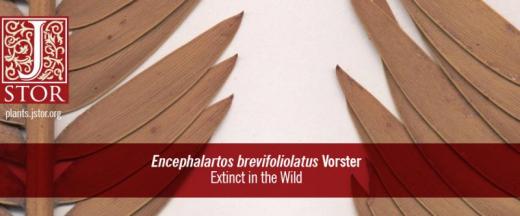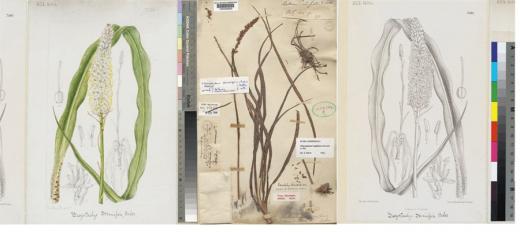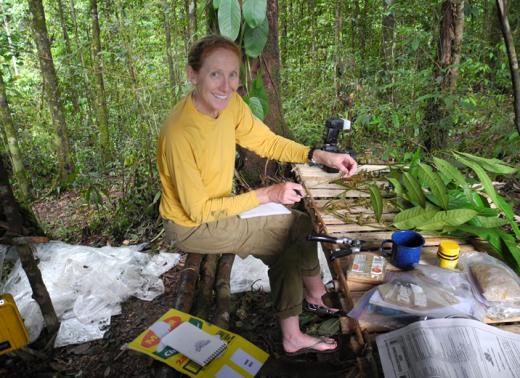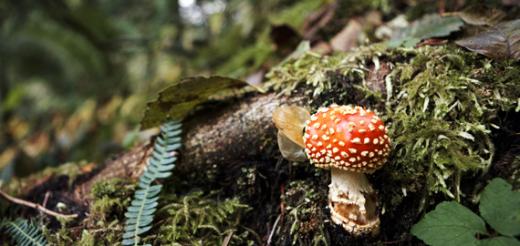New content: Botanische Staatssammlung München artwork
We are delighted to let you know we have added two new unique collections to Global Plants:
Botanische Staatssammlung München Artwork – Water Colours of Fungi by Fritz Wohlfarth
This collection consists of watercolors of fungi painted by Fritz Wohlfarth (1906–2005). Dr. Fritz Wohlfarth studied at the Ludwig-Maximilians-Universität München (Germany) and obtained a Ph.D. degree in chemistry. For many years he worked as a field sales representative for a varnish company in Munich. During his tours around Germany and… Read more»
 A world without plants?
Would you like to learn more about Plant Blindness and teaching about it in the classroom? JSTOR has some resources for you to help you get started.
A world without plants?
Would you like to learn more about Plant Blindness and teaching about it in the classroom? JSTOR has some resources for you to help you get started.  We interviewed long-time
We interviewed long-time 
 Shelley James is a Curator and Expedition Leader at the
Shelley James is a Curator and Expedition Leader at the  Gwenaël Le Bras was a database coordinator at the National Herbarium in Paris, acting as a liaison between the GPI team and the IT department of
Gwenaël Le Bras was a database coordinator at the National Herbarium in Paris, acting as a liaison between the GPI team and the IT department of  Part of the shared mission of JSTOR and the Global Plants Initiative is to promote awareness and education in plant sciences, environmental science, and the history of science. For those who are just getting started in their study of plants, the volume of material in Global Plants can be intimidating. It is with this in mind that we created Global Plants in the Classroom as a way to share these materials and expose students to their possible uses. Above all, we want to encourage curiosity and exploration.
Part of the shared mission of JSTOR and the Global Plants Initiative is to promote awareness and education in plant sciences, environmental science, and the history of science. For those who are just getting started in their study of plants, the volume of material in Global Plants can be intimidating. It is with this in mind that we created Global Plants in the Classroom as a way to share these materials and expose students to their possible uses. Above all, we want to encourage curiosity and exploration.  Kevin Thiele is a systematist and taxonomist with a particular interest in Australian Proteaceae, Rhamnaceae, Viola and Hibbertia (Dilleniaceae). He is currently working on new Western Australian species and other taxonomic matters in Hibbertia, but notes that as a herbarium curator, there is rarely enough time in the day to complete all that has to get done and manage to do much “real work.” So, he does taxonomic work in between other tasks. For Kevin, this time is almost meditative: “By around 3:30 in the afternoon, to stop myself banging my head on the door or going completely barking mad, I disappear into a quiet corner of the vaults and work on taxonomy for a bit – it’s a wonderful salve for sanity.”
Kevin Thiele is a systematist and taxonomist with a particular interest in Australian Proteaceae, Rhamnaceae, Viola and Hibbertia (Dilleniaceae). He is currently working on new Western Australian species and other taxonomic matters in Hibbertia, but notes that as a herbarium curator, there is rarely enough time in the day to complete all that has to get done and manage to do much “real work.” So, he does taxonomic work in between other tasks. For Kevin, this time is almost meditative: “By around 3:30 in the afternoon, to stop myself banging my head on the door or going completely barking mad, I disappear into a quiet corner of the vaults and work on taxonomy for a bit – it’s a wonderful salve for sanity.”